How are cacao and cocoa different? Which is healthier, cocoa or cacao? Do cocoa and cacao taste the same? As a chocolate writer, I get these questions all the time, and the answer is quite simple: cacao and cocoa are the same word, in different languages.
It's a bit of a debate in the craft chocolate industry as to the functional differences between the words, but in common usage the difference is difficult to neatly define. This is because legally, cacao and cocoa have the same meaning.
If anyone tells you differently then they're either trying to sell you on the benefits of cacao as a super food, or they don't know what they're talking about. Guaranteed.
The only real difference between cocoa and cacao is in the implication & context of each word in their respective languages. As a result, there can be rather large differences surrounding the common usage of the two words, depending largely on the country.
In this article, we dig into how different cultures have changed the implied meaning of cacao or cocoa in various contexts. Please use the table of contents below to 'jump to' specific sections.
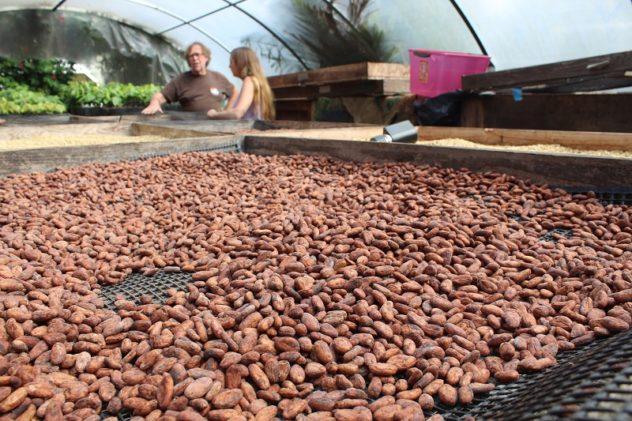
Jump To
Overall: Difference Between Cocoa and Cacao
Once you dive into their understandings of the two words in most people's minds, it's easy to see why most people are so confused.
Linguistically, the cacao and cocoa are entirely interchangeable. But due to the more botanical connection of 'cacao,' it has a much more healthy and natural connotation. 'Cocoa,' on the other hand, thanks to its historical usage in Africa and Asia, where mostly low-quality cacao is grown, has a cheaper and less healthy reputation.
Even within the chocolate industry, "cacao" is usually used to refer to the raw product, from the tree to the roasted cacao seeds, which some people will then refer to as "cocoa beans."
Some makers still call them "cacao beans" even after roasting, however (though the irony continues in the fact that they're seeds, not beans). There's now a public understanding of cacao as a "super food," which it can be— but only to a point.

The problem is that most people still don't associate cacao with chocolate, adding to the confusion. Therefore depending on the origin of a chocolate or cocoa product, they may list the ingredients as cocoa or cacao.
Depending on the image a product wants to portray, they may market it as cacao-based or cocoa-based. And depending on how thoroughly you read this article, you may now consider yourself educated on both cacao and cocoa.
I reiterate, the dictionary definition of cacao and cocoa, and the product itself, are the same. It's the way that people use the words that's different.
"Cacao" is often used in reference to the raw material of and from the Theobroma cacao tree, as well as cacao products which want to appear more healthy or natural to consumers.
"Cocoa" is often shown alongside marshmallows and other sweets, and used to sell cheap chocolate-flavored snacks.To read more about the health benefits of cacao and quality chocolate, click here.
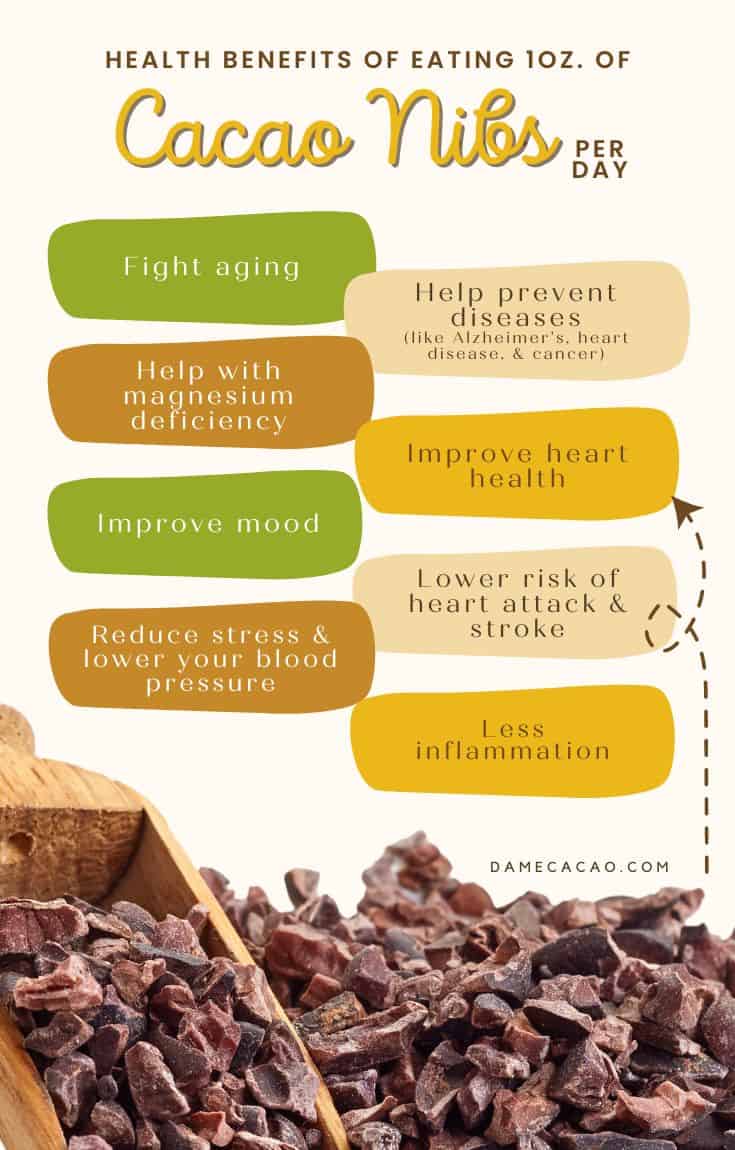
Cacao vs Cocoa: Etymology
The original name of the fruit Theobroma cacao, long before it was dubbed cacao or cocoa, was derived from the word cacahuatl, meaning "bitter or acidic water." The word comes from the Aztec language of Nahuatl, and the plant was known by a similar-sounding name throughout the Americas.
The fruit is called cacau in Portuguese. Despite being native to South America, the cacao plant is believed to have been consumed much more in Central America, from modern-day central Mexico down to Honduras.
The genus name roughly translates as "food of the Gods" or "nectar of the Gods" in Greek. The plant was named as such by Swedish explorer Carl Linnaeus in the late 18th century. As you may recall, Spanish explorers were the first Europeans to invade modern-day Central America.
In the process of that, they found a delightful food which the locals called cacao. At the time they thought it was some kind of New World almond.

Each native group had their own name for the plant, but the most relevant name in the modern era is the Nahuatl name. This is the version taken and mangled by those Spanish invaders, and eventually brought back to Europe as "cacao."
Though strangely, the more commonly-known term these days is the Mayan word kakaw, the glyph of which has become rather famous. In turn, "cacao" was once again transformed when it made its way into the English lexicon, becoming "cocoa."
According to legend, the initial difference between cocoa and cacao may even come down to an incorrectly written ledger on a cargo ship. Since the Nahuatl word is little-known— much less used— outside of present-day Mexico, the two paths which the term has taken are as follows: Spanish, and English/French.
If you listen to how to pronounce cacao in other languages, it inevitably sounds similar to the basic "kah-kow." But within the pronunciation you may be given a clue as to whether the word was added to their language via English or Spanish.
As evidenced by the name of this site (Dame Cacao), I have a preference for the latter.
How to Pronounce Cacao
Cacao pronunciation: "cuh-cow" just like in 'cut' or 'cowardly.'
How to Pronounce Cocoa
Cocoa pronunciation: "co-co," just like in "coconut," because the "a" is silent in English.
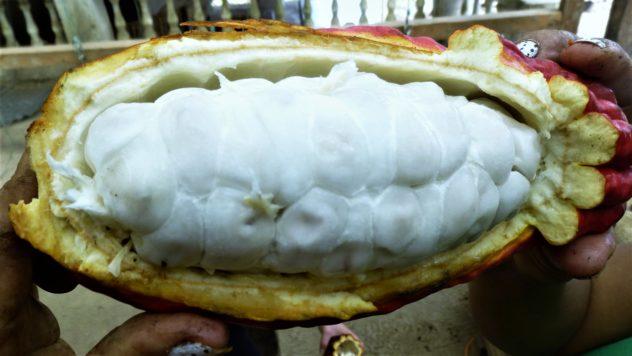
Cocoa vs Cacao: What Is Cacao?
As mentioned above, "cacao" is Theobroma cacao, a plant in the Theobroma family, native to South America and grown in Central America for millennia. This cultivation didn't stop when the plant was taken to new lands and grown elsewhere.
Cacao is still a very important food throughout the Americas, not to mention in Africa & Asia. But since cacao is the Spanish butchering of the word, and the former Spanish colonies are the epicenter of cacao culture, it's their word which has become elevated in recent years.
The Spanish brought a more nuanced cacao varietal to their former colonies, including the Philippines and throughout the Americas. The criollo varietals have a less bitter & more floral and nutty flavor than their hardier forastero counterpart (discussed below).
At the time that they were bringing criollo cacao abroad, the Spaniards may not yet have discovered other varietals, but that doesn't change the impact their choice has had.
It's led to entirely different consumption patterns, and in general less processing necessary to make it palatable. For roughly a century, in fact, the Spanish managed to keep cacao a secret from the other European powers. Until one day, it all spilled out.
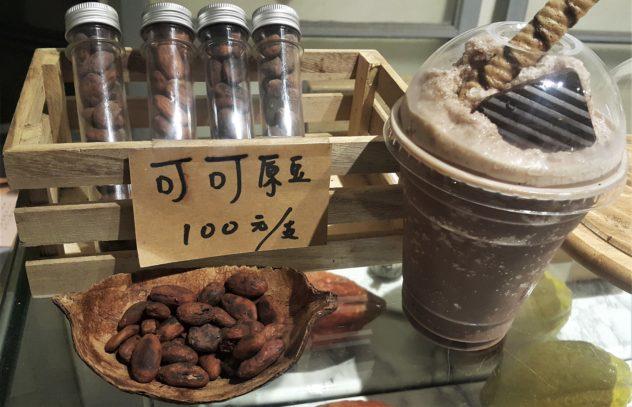
The Spanish had been consuming cacao almost exclusively in the form of an unsweetened spiced cacao beverage, thought to be an aphrodisiac and generally seen as a show of wealth. In Spain and its colonies, in fact, the consumption of cacao was largely either in the form of a prepared cacao drink or on the plantation in the form of a fruit or fruit liquor.
In all forms it was very expensive, making it a highly coveted & specialty food. To this day, Spain's consumption of cacao is still mostly in the form of liquids, either drinks or sauces. Even in former Spanish colonies, like the Philippines or Guatemala, most cacao-based products are consumed as less-processed drinks.
Chocolate, on the other hand, is the name of a sweet imported treat, primarily made of sugar. The irony of this is that thousands of their countrymen make their living growing cacao, only to export it at (almost always) a criminally low price.
The cacao fruit and the products made from lightly-processed cacao seeds taste completely different from the chocolate-flavored candy bars you find in the US and other Western countries. Even though they come from the same plant, on the backs of those bars you'd also most likely see the ingredient "cocoa mass," not "cacao beans."
These cacao fruits actually taste more like lychee and strawberry, while lightly-processed cacao products taste a little more bitter and much less flat & sweet than grocery store chocolate bars.
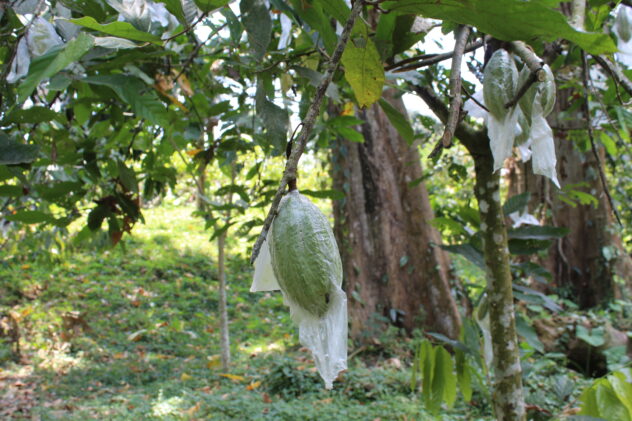
Cacao vs Cocoa: What Is Cocoa?
Just like cacao, "cocoa" is the fruit and seeds of Theobroma cacao, a tropical plant native to South America. However, "cocoa" is the English word for the plant, a mangled interpretation of the Spanish word "cacao." "Cocoa" entered the languages when the plant itself did, also via the Spanish Empire.
Since Theobroma cacao is native to the Americas, once the French & British got their hands on parts of the it, they promptly began taking the plant to their other colonies. But for the most part, in those first few hundred years only the hardier varietal known as forastero, most common in South America, successfully made it across oceans.
Eventually cacao made it to Africa, Asia, and the South Pacific, where French, Spanish, British, and Dutch colonies were established. Since they were raising a varietal that was naturally a bit more flat and strong in flavor (not to mention more bitter), their inclination was not towards drinking.

They needed to add something to their hot chocolate to make a heartier product, particularly to counteract the seed's bitter properties. So they turned to corn starch and other thickeners, as well as a healthy dose of sugar or honey.
In many ways this cheapened the product, but it also increased how long each cacao fruit and each bag of cacao beans could last. The French and the British brought cocoa from a high-class beverage to an accessible indulgence for people of most classes.
Europeans' motivations for consuming cocoa in both liquid and solid forms were very similar to those of the Spanish, but for a host of reasons, the situation surrounding cocoa slowly changed. In the 1800's, an Englishman named Joseph Fry created the first chocolate bar.
While other ingredients were added to the drink, like milk and spices, the food version was just an unsweetened cocoa powder with some sugar & extra cacao butter added in.
Cacao or cocoa, whatever you call it, is about half fat in its natural state. This fat is often pressed out of the cocoa beans and sold as cocoa butter, which is used to make white chocolate and otherwise highly prized in the cosmetics industry.
The rest of this cocoa cake is mostly made up of cocoa solids, which are ground into cocoa powder for making chocolate drinks. Later in history, this powder was also added to other desserts as a prized flavoring.
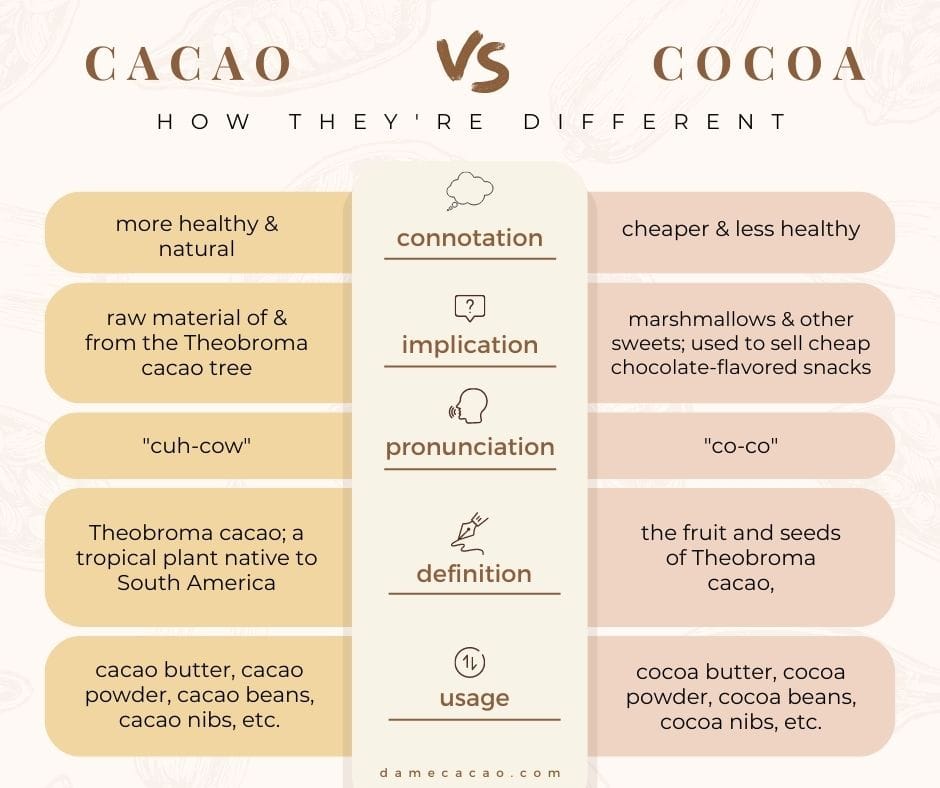
Cocoa slowly shifted from the English word for a fruit grown in the Spanish colonies to an ingredient used to flavor treats.
Because of these differing consumption patterns and cultivation choices of the European powers, the connotations of the words "cocoa" and "cacao" have themselves changed. When you think of cacao you likely think of the fruit and the cacao nib.
But when you think of cocoa you likely think of cheap chocolate and sweet cocoa drinks, furthering the implied difference between cocoa and cacao. So.... is cacao actually good for you? Well, that depends completely upon how it was grown and processed.
Health food stores would have you believe that the debate is cacao powder vs cocoa powder, villainizing one over the other, when in reality you could call your product either name and be correct. Legally, switching cocoa and cacao doesn't change the origin or processing of the ingredient. It's just a stylistic choice.
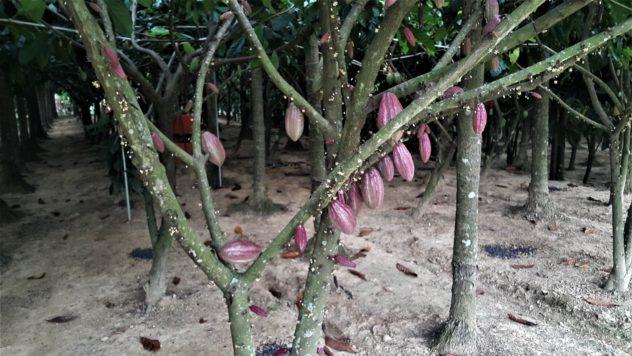
What Makes Cacao and Cocoa Different (Usage)?
Anyone who tells you that "cocoa" often contains sugar or hydrogenated oils is very ill-informed. It's like saying that peanuts contains salt and sugar just because some peanut butter does. Just as not all products labelled "cacao" should be prized, not should all those labelled "cocoa" be rebuked.
The difference between cacao and cocoa is purely linguistic & stylistic. Because of the British, French, and American origins of most chocolate products throughout the 20th century, most people think of cocoa as the base material for dark chocolate.
It's even in the name of that sweet, warm beverage you slurp on cold winter nights, and on the ingredients list of every brownie recipe. But hot cocoa and cocoa powder are not the only products we consume made from Theobroma cacao; they're just some of the most common.
In fact, the most commonly consumed form of cacao is probably in the form of chocolate (another industry in which the cocoa vs. cacao debate lives on). In my experience, a chocolate maker who refers to the beans as cacao often bought their beans from a Latin American country.
That's where most of the world's organic and high-quality cacao comes from. This has changed over the last few years, however, as more & more craft chocolate makers have started their businesses.
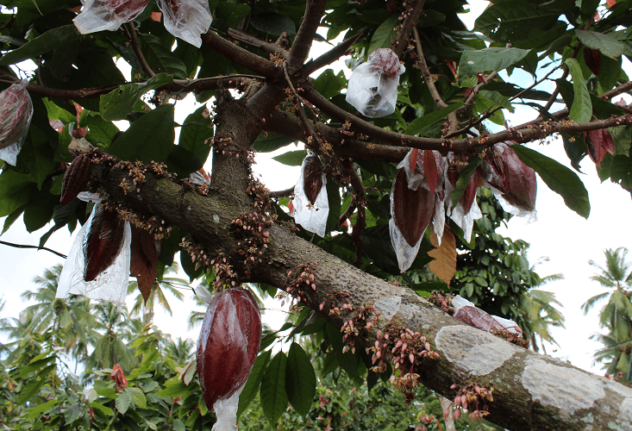
On the other hand, makers who call the beans "cocoa" are often buying beans from Africa or Asia, or possibly grew up in a country where the tree was called "cocoa," and "cacao" was its scientific name.
People tend to think of cocoa and cacao as being different products of the cacao bean, when really they're just different names and implications for the same product.
Smaller chocolate makers tend to call their ingredient cacao and source from smaller cacao plantations with more careful processing and attention to detail. They then turn said cacao into less-processed chocolate products, and maybe even a variety of cocoa products featuring bits of cacao beans (called nibs).
On the other hand, bigger chocolate manufacturers tend to call their ingredient cocoa and source from massive cocoa traders in West Africa or Indonesia. They sometimes work from chocolate liquor, are more focused on quantity over quality, and continue to use the English word "cocoa" throughout their processing.
Therefore, products calling themselves "cacao" something or other tend to be less-processed and use less added sugar, though many natural food companies are using this as marketing leverage. "Cocoa" is not necessarily an over-processed version of the cacao fruit, but it often is.
What the consumer needs to know is that cacao and cocoa have different implications, yes, but it's still their job to look at labels and see whether that product fits in with the implications of its word choice. For example, cocoa powder and cacao powder are the same food, even if Googling this question seems to tell you different.
Pin me for later!














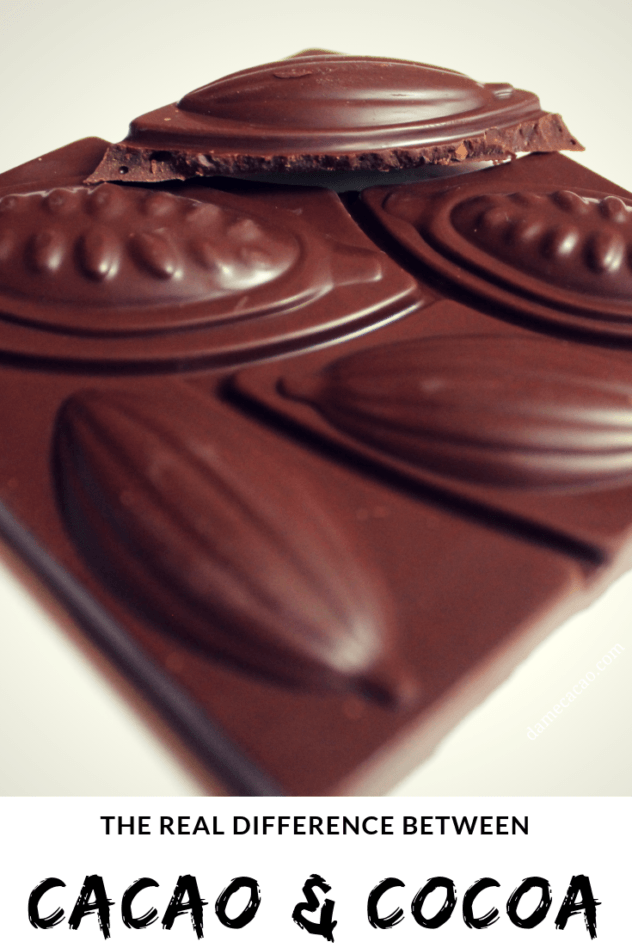




Jennifer D Life
Hi! I just found your site today while looking for some good chocolate for baking. I enjoyed the education! : ) I would like some information that I didn't see addressed in this article or any of the others I have skimmed over. This is the only one I have thoroughly read as of yet. So, I hope I didn't miss it, causing you to repeat info....it's been a busy evening.
I have been learning about cacao vs cocoa. One major difference I have found (or so I thought) is that when the beans are not roasted, but simply ground or cold pressed ..... or fermented & ground, is that they have a lot less caffeine, and a lot more nutrients intact. With this in mind, when I purchase that "powdered stuff" I read the bags looking for raw or fermented.
What are your thoughts on that?
Also, I have decided to try Guittard for my baking chocolate, thank you for the recommendation. I was very pleasantly surprised to see sunflower lecithin instead of soy!
Max
Thank you, Jennifer! Most readers just want a quick answer, so I appreciate you taking the time to read it through, despite your busy evening. You have some interesting queries, so I'll try to give as straightforward of an answer as possible - 'raw' is more or less a gimmick, and fermented cacao is indeed good (though most all cacao is fermented, so that's not usually on labels). As for nutrient levels and caffeine, there's really not that much caffeine in chocolate, but in theory, darker roasts should actually have less caffeine since it's destroyed at higher temperatures (like in coffee roasting). And the nutrients in cacao are mostly minerals and antioxidants, the former of which remains intact even at high temperatures, and the latter of which is minimally affected by the temperatures during roasting and concheing. Studies have found that the fermentation process and the cacao varietal each have a small impact on the antioxidant levels, but not enough to write home about.
So the core question I think you're getting at is how to know whether or not the chocolate/cacao product you're buying is good quality and good for you. Beyond just reading the ingredients label, the origin(s) and processing of the cacao is most important in determining the nutrient level and caffeine content, so you're beter off 'buying the brand' than picking individual ingredients as you go through the grocery store. This is because the brands themselves all have websites where they show you how their products are made and where they source their ingredients (or they don't), but this isn't info you'd ever find on packaging. Very few chocolate bars will name the origins of their cacao, much less anything about the varietals used or how much they paid above or below market price, etc.
I could get into this for hours (and have, over many hundreds of posts), but the bottom line is that if you care about your chocolate (and cocoa powder, hot cocoa mix, etc.) then you should treat it like wine or coffee and get to know the brands which make them and pick a favorite or two that you buy your bars and powders from. Several large, ethical chocolate makers are producing tons of high quality chocolates and cacao products at very reasonable prices, and they're run by real people who will happily tell you all about the origins and processes they go through, without sending you to an AI chatbot that will drive you mad with nonanswers. 🙂
I hope you enjoy Guittard products; that's one family-owned business I've loved watching continue to expand in recent years!
Brenda Moody
I’m still a little confused. That may be because it’s difficult to believe the tree fruit tastes like chocolate without heavy processing. I recently bought some ground cacao to see if I wanted to replace my decaf coffee with it. It tastes just like chocolate. Are you saying it is just ground cacao fruit with no other processing? The package says 100% ground cacao. I apologize for sounding so ignorant but it’s hard to believe there’s a tree that tastes like the chocolate we’ve eaten all our lives. Lol
Max
No, you're pretty much on the money, there-- as I cover in the article, the ground cacao you bought was almost certainly heavily processed, from being fermented and dried over the course of weeks on the farm, to being aged during transport and then roasted, peeled, and aerated to lessen the acidity of the final ground cacao. This processing isn't bad for you, per se, either; it's all the sugar that's added to most chocolate that's the culprit of the negative effects of chocolate consumption. Replacing your decaf with ground cacao sounds delicious and nutritious, if the final flavor appeals to you!
Megan
Thanks for writing this! Very informative and easy to follow! It's good to know the main difference is a marketing choice. Learning about the chocolate industry makes me think more about my chocolate consumer choices and this article definitely helps!
Max
Oh, that makes me so happy to hear! I'm glad to have played any small role in that journey-- thank you for leaving a comment, Megan!
Fern
This was an interesting read. Answered my questions for sure. Although I am bilingual French and English since birth. I always knew cacao to be French and cocoa to be English. That's why I was confused when I started hearing people saying cacao in English. That is the only issue I have with your article, as you say that in French it is still cocoa, not the way I have ever known it to be. In my French experience, cocoa refers to coco, or noix de coco; coconut in English.
Still, I appreciate the work you put into giving us the history and all.
Max
Sure, Fern; it's my pleasure! From my experience in a variety of French-speaking countries, cocoa seems to be more popular, though cacao has become the norm in all bean to bar circles. Admittedly, most of my experience with French speakers who trade in cocoa comes via Africa, where cocoa is definitely the preferred term, in my experience. So it's fully possible that in French-speaking Europe, cocoa isn't as common as in other Francophone regions, and cacao is more the norm. I could certainly see the confusion with noix de coco, too, though interestingly when Spanish-speakers use the word "cocoa," they pronounce it like "co-co-ah"!
Jonah
This was what I was looking to learn. You have performed a fantastic job on this matter!
Max
Oh, thank you! Haha
Peter Richards
Cocoa is a healthy ingredient if we take it in limits. It has much stronger antioxidants than fruits with some of the highest antioxidant properties, such as blueberries and acai berries. There is also an endless variety of mouthwatering chocolates to choose from; truffles, nibs, bars, chocolate covered nuts, fruit-filled chocolate, and more!
Max
Indeed! Lots of ways to enjoy antioxidant-heavy chocolates.
Celestino Trono IV
My wife has cancer. She drinks cacao sometimes during breakfast.
Max
I'm so sorry to hear about your wife, Celestino, but I'm glad she has someone to support her during this incredibly difficult time. I hope she's drinking a high percentage cacao without any milk, for optimum benefits (and smiles)!
Ang
Hey Max, just wondering, usually how many day is the fermentation and what is the temperature required? Will all of these effected the flavour?
Max
Yes, both of those factors highly affect flavor, and vary greatly depending on location, length of fermentation, cacao varietal, size of beans, etc. "Hardier" varietals like forasteros usually ferment for 4-7 days, while criollos need just 2-3. Temperatures can reach as high as 50 degrees Celsius!
Tom Forbes
Very good read. My introduction to cacao happened in the Dominican Republic and it is cacao until it ground into chocolate. Dominicans refer to cacao powder as cocoa with the uh pronounced at the end. Once attended a WCF meeting in Santo Dominigo and was really the first time I heard cocoa being used for the first time to refer to cacao. It took me a while to get used to because every time they say cocoa I think of powder.
Max
Thanks, Tom! I'm glad you enjoyed the article. Isn't it interesting how Spanish and English have adopted each other's vocabulary, and the connotations which lay therein? Once it is no longer in nib form, people in many Spanish-speaking countries start calling it cocoa (pronounced like a Spanish word,
So with the "uh" at the end); I think because it no longer much resembles it's original form.